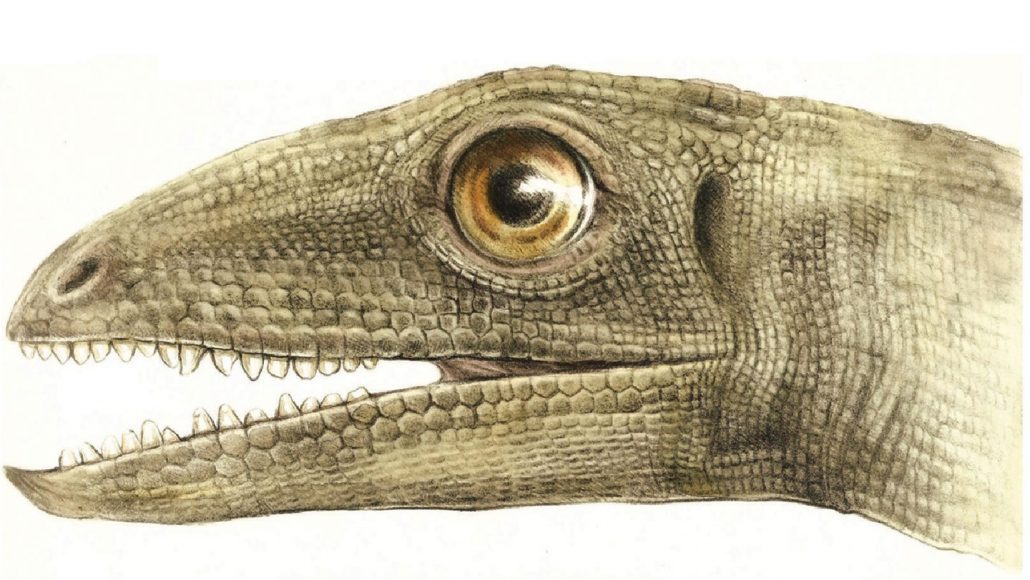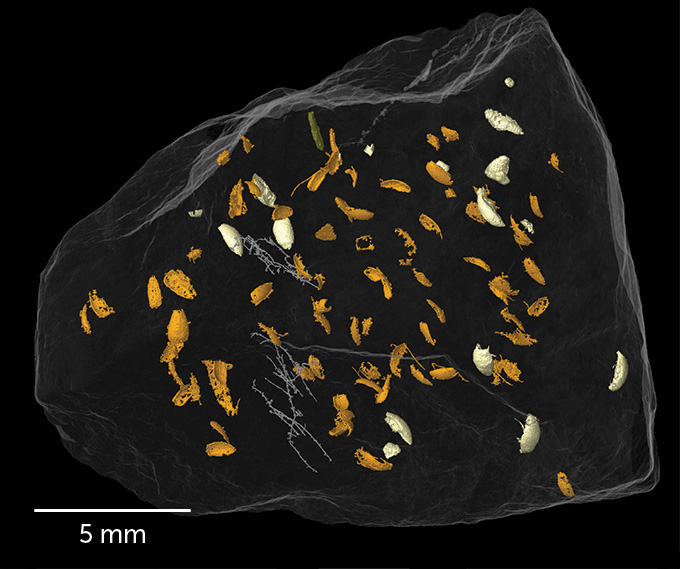New beetle species found in fossil poop of this dino relative
The find suggests ancient feces may deserve a closer look from scientists

Scientists found never-before-seen beetles by analyzing ancient poop. It was likely left by an insect-eating reptile relative of dinosaurs called Silesaurus opolensis (illustrated).
Małgorzata Czaja
By Nikk Ogasa
In a fossilized chunk of ancient reptilian poop, scientists have found nearly complete specimens of a new species of beetle. Fossil dung could hold more details about past life than previously thought, the new find suggests.
Researchers described the novel beetles June 30 in Current Biology.
Such ancient feces have been “largely overlooked,” notes Martin Qvarnström. “But they often contain very well-preserved fossils,” he adds. “They’re like hidden treasure chests.” Qvarnström is an evolutionary biologist and author of the study. He works at Uppsala University in Sweden.
Pieces of fossilized dung are known as coprolites. They can reveal insights about what extinct creatures ate. That’s something that most fossils of body parts can’t. For example, coprolites have been used to show that some plant-eating dinosaurs also dined on crustaceans.
Feces, especially from carnivores, can readily form into coprolites. Dung often contains the raw materials and bacteria needed for it to fossilize, says Karen Chin. She is a paleontologist who was not involved in the study. She works at the University of Colorado Boulder. Lab tests have shown that buried animal remains can fossilize in just weeks. Doing it that quickly would save delicate structures in the dung as it gets buried over time. “If you didn’t get rapid mineralization, the feces would get flattened,” she says. In fact, she notes, “Most coprolites are three-dimensional.”
In terms of preserving power, coprolites can be overshadowed by amber. Amber is a translucent tree resin. Some of the most well-preserved, 3-D insect fossils have been found in amber. But resin only became common around 150 million to 130 million years ago. So it’s rare to find amber-preserved insects older than that.
Qvarnström and his colleagues wanted to know if much older, fossil poop could match the quality of amber specimens. To peek inside a coprolite from Poland, the researchers used a synchrotron. It releases powerful X-rays. The dung they viewed likely came from an extinct dinosaur relative. Called Silesaurus opolensis, it lived some 237 million to 227 million years ago. That was during the Triassic Period.

The X-ray scan revealed almost whole beetle fossils. They rivaled the quality of similar specimens in amber. The scan also exposed fragments from the same type of beetle. Fossil exoskeletons of whole beetles lack the joints needed to fully classify them. So the researchers pieced together other pieces of beetle fragments. Now they could reconstruct those features. In this way, the team identified the insects as a new family and species. They named the beetle Triamyxa coprolithica. That species name reflects the beetles source here: coprolites.
Qvarnström hopes more researchers will begin to recognize how useful fossil dung can be. “This dinosaur ancestor was doing a bit of the fieldwork for us,” he says. “We wouldn’t have been able to find these insects otherwise.”







